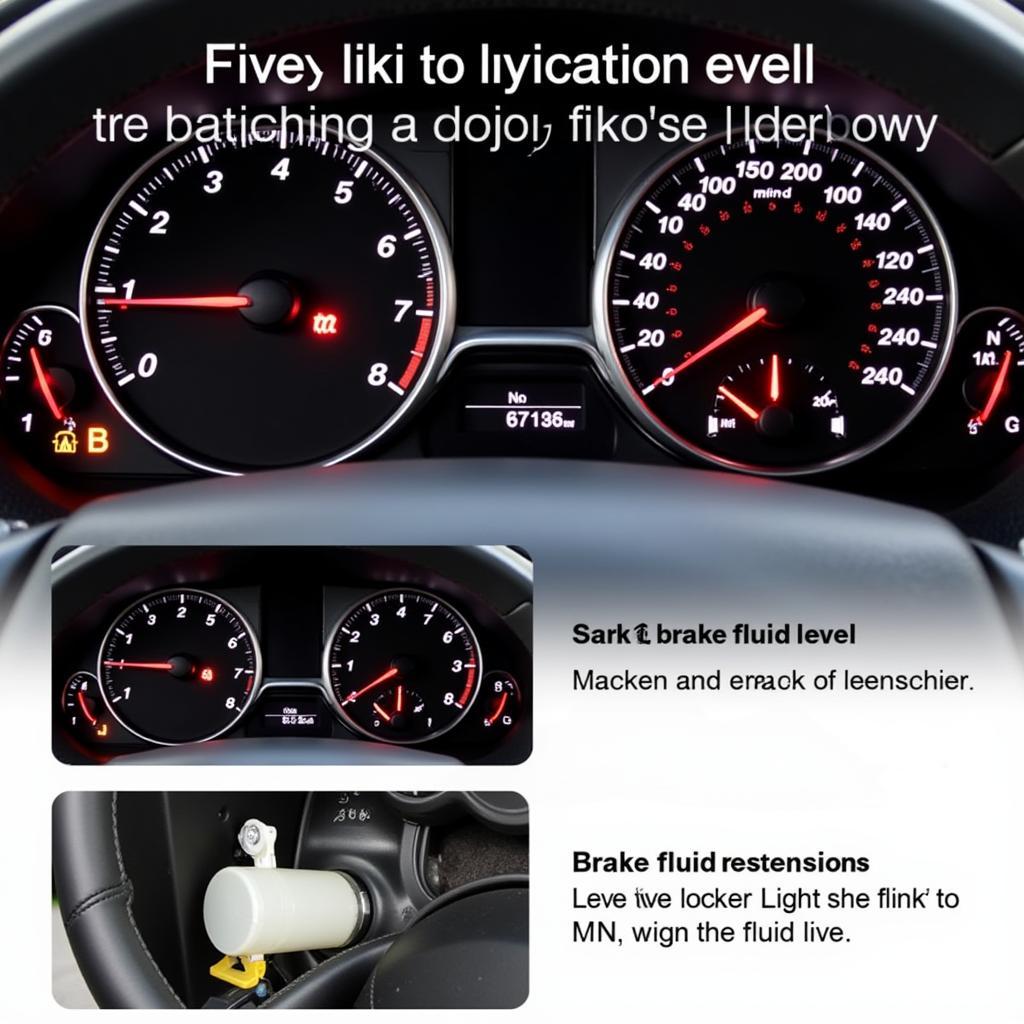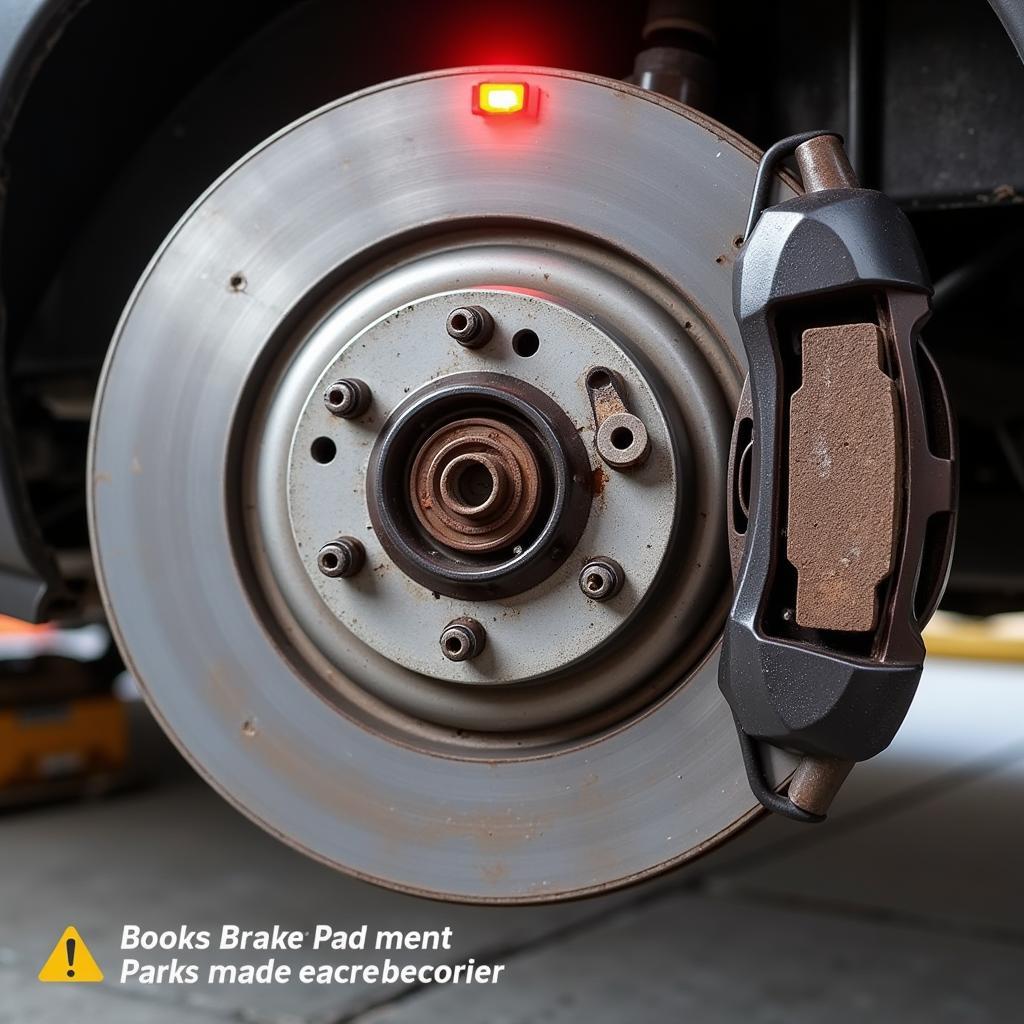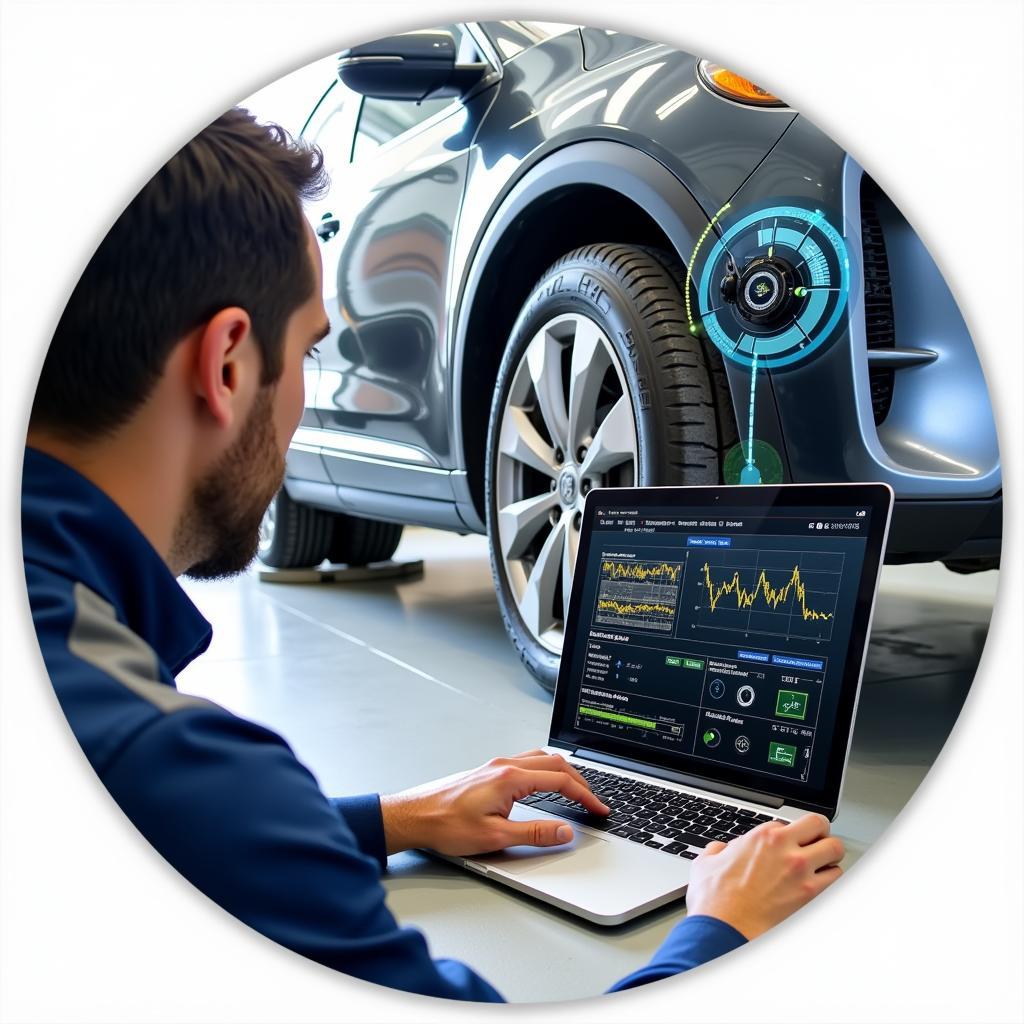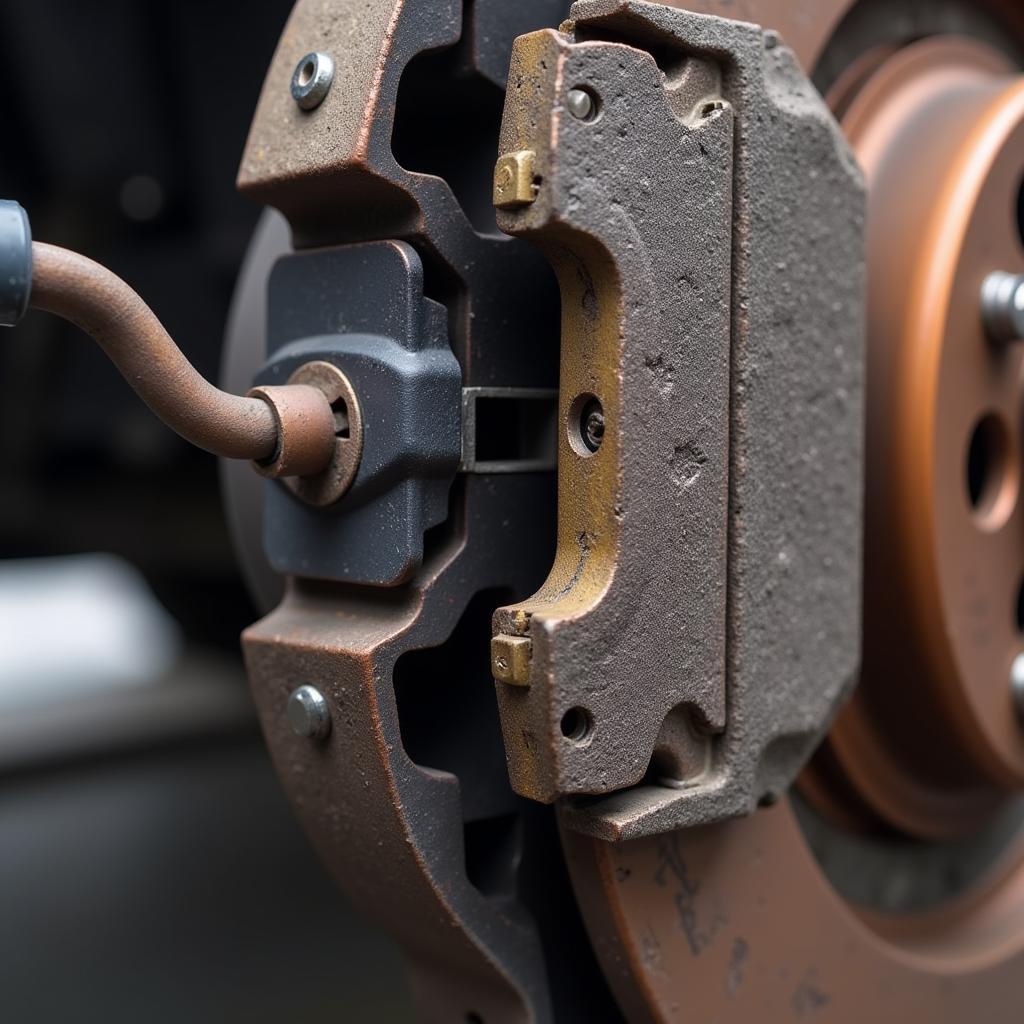The brake warning lamp, a critical component of your vehicle’s safety system, alerts you to potential issues with your braking system. Ignoring this warning could lead to serious safety risks. This article will delve into the intricacies of the brake warning lamp, covering its function, common causes of illumination, diagnostic procedures, and solutions.
Similar to a brake lamp warning light 2000 honda accord, the illumination of this lamp signals the need for immediate attention to your vehicle’s braking system.
Understanding the Brake Warning Lamp’s Function
The brake warning lamp is designed to illuminate when it detects a problem within the braking system. Its primary function is to alert the driver to potential dangers and prompt them to seek necessary repairs. While it can indicate a range of issues, from a simple low brake fluid level to more complex problems like a malfunctioning ABS system, the warning should never be ignored. Regular maintenance and prompt attention to the brake warning lamp can prevent accidents and ensure the safety of you and your passengers.
Common Causes of a Lit Brake Warning Lamp
Several factors can cause the brake warning lamp to illuminate. The most common reasons include:
- Low Brake Fluid: A low brake fluid level often signifies a leak in the brake lines or a worn-out brake pad. This necessitates immediate inspection and repair.
- Parking Brake Engaged: While seemingly obvious, sometimes the parking brake is inadvertently left engaged, triggering the warning lamp.
- Faulty Brake Light Switch: This switch activates the brake lights when the brake pedal is pressed. A malfunctioning switch can also trigger the brake warning lamp.
- ABS Issues: Problems with the Anti-lock Braking System (ABS), such as a faulty sensor or module, can illuminate the warning lamp.
- Worn Brake Pads: Excessively worn brake pads can activate a sensor that illuminates the warning lamp.
 Brake Warning Light Due to Low Fluid
Brake Warning Light Due to Low Fluid
Diagnosing the Problem
When the brake warning lamp comes on, it’s crucial to diagnose the problem accurately. Start by checking the brake fluid level. If it’s low, top it off and monitor it for further drops. If the fluid level continues to decrease, you likely have a leak. If the parking brake isn’t engaged and the fluid level is adequate, further diagnostics may require specialized tools and expertise.
How to Fix a Brake Warning Lamp Issue
Fixing the issue depends on the underlying cause. A low brake fluid level requires identifying and repairing the leak before refilling the fluid. Worn brake pads need replacement, while a faulty brake light switch or ABS issue usually necessitates professional repair.
 Brake Pad Wear Indicator Triggering Warning Light
Brake Pad Wear Indicator Triggering Warning Light
This is comparable to a buy a 1994 honda accord lx brake warning lamp sensor situation, where identifying the specific faulty component is key to resolving the issue.
Remote Diagnostics and Software Solutions
In modern vehicles, remote diagnostics and software updates can sometimes address specific brake warning lamp issues. These solutions, performed by qualified technicians, involve accessing the vehicle’s onboard computer system remotely to identify and rectify software glitches or update the ABS module. However, it’s important to remember that physical issues, like leaks or worn components, will still require hands-on repair.
Why is my brake warning lamp on?
A glowing brake warning lamp signals a potential issue with your braking system. This could range from low brake fluid to worn brake pads or even a malfunctioning ABS system.
What should I do if my brake warning lamp comes on?
If your brake warning lamp illuminates, it’s crucial to pull over safely as soon as possible and check your brake fluid level. If the fluid is low, refrain from driving and seek professional assistance. If the fluid level is normal and the parking brake is disengaged, proceed with caution and have the vehicle inspected by a qualified mechanic immediately.
 Remote Diagnostics of a Brake System
Remote Diagnostics of a Brake System
Conclusion
The brake warning lamp is a vital safety feature in your vehicle. Understanding its function, the common causes of illumination, and the necessary diagnostic steps are essential for safe driving. Ignoring this warning can lead to dangerous situations and costly repairs. Regular maintenance and prompt attention to the brake warning lamp ensure a safe and reliable braking system. Remember, a functioning brake warning lamp, like the one in a brake lamp warning 2008 honda pilot, is paramount for road safety.
FAQ
- Can I drive with the brake warning lamp on? It’s strongly advised against driving with the brake warning light illuminated. This indicates a potential problem with your brakes, which could compromise your safety.
- How often should I check my brake fluid level? It’s recommended to check your brake fluid level at least once a month.
- What does it mean if my brake warning lamp flashes? A flashing brake warning lamp often indicates a serious problem with the ABS system.
- Can a faulty sensor cause the brake warning lamp to come on? Yes, a faulty sensor, such as a wheel speed sensor in the ABS system or a brake pad wear sensor, can trigger the brake warning lamp.
- Is it expensive to fix a brake warning lamp issue? The cost of repair depends on the underlying cause. A simple low fluid top-up is inexpensive, while more complex repairs like ABS module replacement can be costly.
- Can I fix the brake warning lamp issue myself? While some issues like low brake fluid can be addressed by the owner, more complex problems require professional expertise.
- What is the difference between the brake warning lamp and the ABS light? The brake warning lamp generally indicates a problem with the overall braking system, while the ABS light specifically signals an issue with the Anti-lock Braking System. Sometimes, both lights can illuminate simultaneously. This is similar to the scenario described in c1226 brake warning lamp ground short ford f150 1999, highlighting the importance of accurate diagnosis. Understanding these distinctions, much like the nuances between a brake warning lamp ground short and other brake issues, is crucial for effective troubleshooting.


